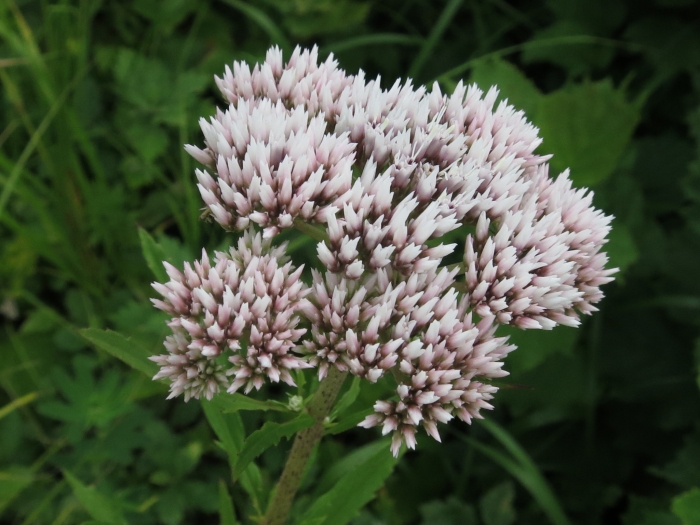Lindley’s Thoroughwort
(Eupatorium lindleyanum)
Lindley’s Thoroughwort (Eupatorium lindleyanum)
/
/

Repina Tatyana
CC BY 4.0
Image By:
Repina Tatyana
Recorded By:
Copyright:
CC BY 4.0
Copyright Notice:
Photo by: Repina Tatyana | License Type: CC BY 4.0 | License URL: http://creativecommons.org/licenses/by/4.0/ | Rights Holder: Repina Tatyana | Publisher: iNaturalist | Date Created: 2019-07-28T14:39:01-07:00 |
























Estimated Native Range
Summary
Eupatorium lindleyanum, commonly known as Lindley’s Thoroughwort, is an herbaceous perennial native to a variety of habitats including moist meadows, stream banks, and forest edges in China, Japan, Korea, and Siberia. It typically grows from 12 to 59 inches tall from a short rhizome and can spread to form clumps. The plant features clusters of small, fluffy, purple or white flowers that bloom in late summer to early fall, adding a touch of color to the garden when many other plants have finished flowering. The flowers are attractive to butterflies and other pollinators, making it a beneficial addition to wildlife gardens.
Lindley’s Thoroughwort is valued for its late-season blooms and its ability to thrive in moist, fertile soils with good drainage. It prefers partial shade but can tolerate full sun if sufficient moisture is provided. This plant is often used in naturalistic plantings, borders, and as part of a pollinator garden. It requires minimal maintenance once established, but gardeners should be aware of its potential to spread and may need to control its growth in smaller spaces. There are no major disease problems, but it can occasionally suffer from mildew or rust. It is not known to be invasive when grown outside its native range, but as with all perennials, monitoring and managing its spread is advisable.CC BY-SA 4.0
Lindley’s Thoroughwort is valued for its late-season blooms and its ability to thrive in moist, fertile soils with good drainage. It prefers partial shade but can tolerate full sun if sufficient moisture is provided. This plant is often used in naturalistic plantings, borders, and as part of a pollinator garden. It requires minimal maintenance once established, but gardeners should be aware of its potential to spread and may need to control its growth in smaller spaces. There are no major disease problems, but it can occasionally suffer from mildew or rust. It is not known to be invasive when grown outside its native range, but as with all perennials, monitoring and managing its spread is advisable.CC BY-SA 4.0
Plant Description
- Plant Type: Herb
- Height: 1.5-3 feet
- Width: 1.5-3 feet
- Growth Rate: Rapid
- Flower Color: Blue, Purple
- Flowering Season: Summer, Fall
- Leaf Retention: Deciduous
Growth Requirements
- Sun: Full Sun, Part Shade
- Water: High
- Drainage: Medium, Slow
Common Uses
Border Plant, Butterfly Garden, Groundcover, Water Garden
Natural Habitat
Moist meadows, stream banks, and forest edges
Other Names
Common Names: Blue Boneset, Mistflower
Scientific Names: , Eupatorium lindleyanum, Eupatorium kirilowii, Eupatorium lindleyanum f. lindleyanum, Eupatorium lindleyanum subsp. lindleyanum, Eupatorium lindleyanum subsp. trisectifolium, Eupatorium lindleyanum subsp. yasushii, Eupatorium lindleyanum var. trifoliolatum, Eupatorium lindleyanum var. trisectifolium, Eupatorium sachalinense f. aureoreticulatum
GBIF Accepted Name: